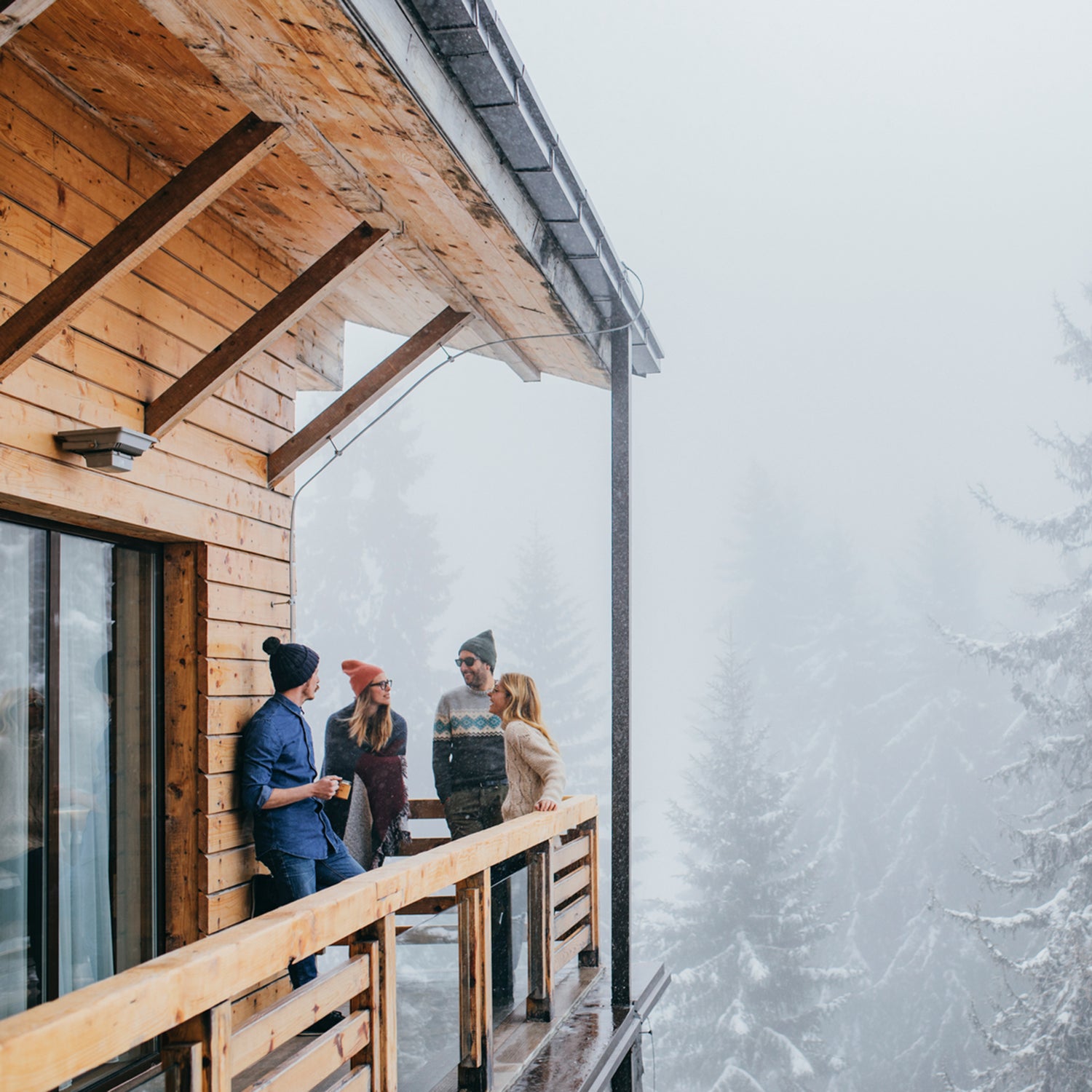“Après clothing” can be interpreted in a few different ways. For some, it’s a $300 cashmere sweater with a kitschy phrase like “Snow Bunny” that looks best on the deck of a ski-in-ski-out lodge. For others, it’s the same sweaty base layer that they’ve been skiing in since 9 a.m. This year, while testing in Montana, we tried to strike a balance—pieces that could be equally at home in the college bar scene at Bridger Bowl, deep in the woods on the sun-soaked deck of a backcountry ski hut, or on the patio of Sun Valley’s upscale Warm Springs Day Lodge.
The Winners at a Glance
- Skida Low Pile hat
- Patagonia Cotton Down jacket
- Roark Layover pants
- Marmot ‘94 E.C.O. Recycled fleece
- Crap Eyewear The Heavy Tropix sunglasses
The Reviews: The Best �´dz����’s Après Apparel of 2024
Skida Low Pile Hat ($38)
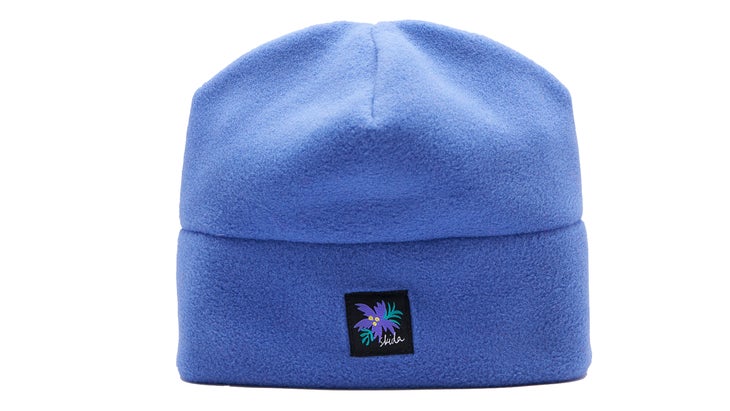
Sizing: One Size
Pros: Cozy, but not so heavy that it made us sweaty
Cons: Excess material bothered some testers
Designed in Vermont (it doesn’t get much colder than a Vermont winter) and made with a recycled, mid-weight Polartec fleece, we felt super cozy wearing the Skida Low Pile beanie in pretty much all scenarios. Testers wore it on dates at the Cider House after laps at Bridger Bowl, while touring up the Goose Creek trail during a 10-degree morning in the Bozeman backcountry, and on the sunny deck of the Woody Creek hut with cheese and crackers in hand. The thinner, low pile fleece kept our heads from getting too hot during chiller tours and on sunny spring days after skiing. The height is reminiscent of fleece beanies from the nineties and early 2000s (in a trendy way.)
Bottom Line: A versatile option for tailgating in parking lots, touring in cold temperatures, and drinks at a local brewery
Patagonia Cotton Down Jacket ($349)
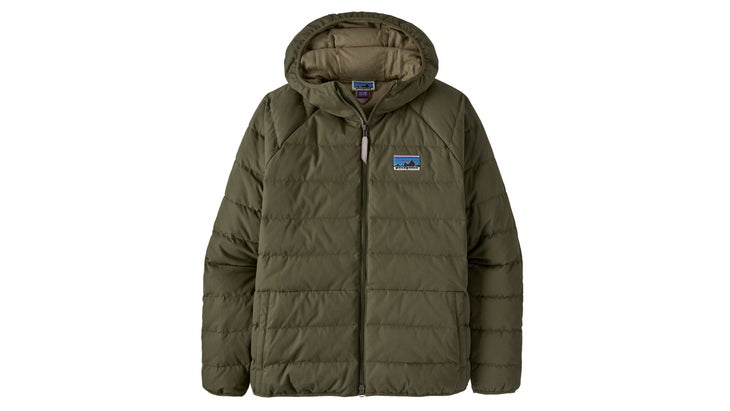
Sizing: XXS-2XL
Pros: Warm, cozy, and waterproof enough for light precip
Cons: The thick fabric is a bit restrictive, especially when zipped all the way up; Pricey
This jacket is inspired by some of Patagonia’s and made from . This makes the jacket feel exceptionally cozy inside and out, with a sort of peach fuzz feel on the exterior. Testers reported that the Cotton Down jacket was excellent for throwing on over ski bibs and tailgating after a tour up History Rock in Bozeman’s Hyalite Canyon. The 600-fill, 100 percent recycled duck and goose down kept one tester warm under an overcast sky with a chilly, late afternoon breeze and temperatures in the high teens. An internal zippered pocket kept their phone warm so the battery didn’t drain quickly in the cold weather. On a slightly warmer day, another tester encountered light drizzle, yet didn’t experience any wetting out thanks to the HeiQ Eco Dry DWR finish (which is also perfluorinated chemical-free). Plus, it’s Fair Trade Certified-sewn.
One ding: Tester Caroline Painter wore the Cotton Down jacket during a bike ride downtown for a few post-ski beers, and noticed the thick fabric felt a bit restrictive and stiff, especially in the chin area. While the chin guard was nice for bundling up, it made it difficult to turn her head when fully zipped with the hood on. So we wouldn’t recommend this piece for particularly active days, but if your primary goal is to tailgate outside with friends while preventing old ski sweat from freezing after a long day on the snow, this is the jacket for you.
Bottom Line: Ideal for less active hangouts in temps from the low teens up to the high fifties
Roark Layover Pants ($95)
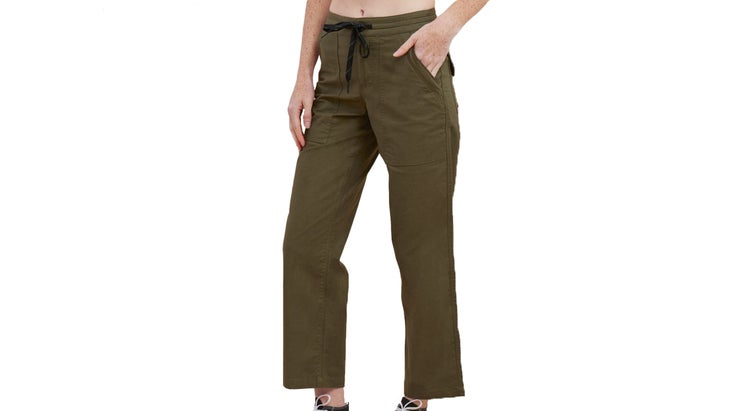
Sizing: 24-32
Pros: Stylish and functional enough to go from the trailhead to the bar to a flight
Cons: Not warm enough for frigid temps
Roark added women’s clothing to their lineup last year (spearheaded by the women who work at the brand), and though none of it is winter-specific, we found that these pants pulled double-duty as a more upscale happy hour piece during warmer days. We fit right in wearing them both in Sun Valley’s Greyhawk parking lot and at the divey Cellar Bar in Ketchum. While the cotton-nylon canvas pants aren’t insulated, making them best for sunny resort decks and parking lot sessions towards the end of the season, they proved exceptionally durable. The Layover pants stood up well against backcountry thistles and a spilled IPA—they dried quickly and showed no signs of staining after a wash cycle.
The straight leg fit was flattering on our testers with different body types. The mid-high-rise waistline provided enough security that we could jog through the parking lot without worrying about them slipping down or riding up. (We recommend sizing up for a boxier, roomier fit.)
Thoughtful details made the Layover pants stand out: deep, zippered front pockets have plenty of storage, a full waistband drawcord makes it easy to adjust the fit, snap closure pockets on the butt supply even more places to store things like keys, and another hidden back pocket provides extra security for a phone or wallet.
Bottom Line: An excellent, verstatile option for late-season après sessions from the parking lot to happy hour to the airport
Marmot ‘94 E.C.O. Recycled Fleece ($130)
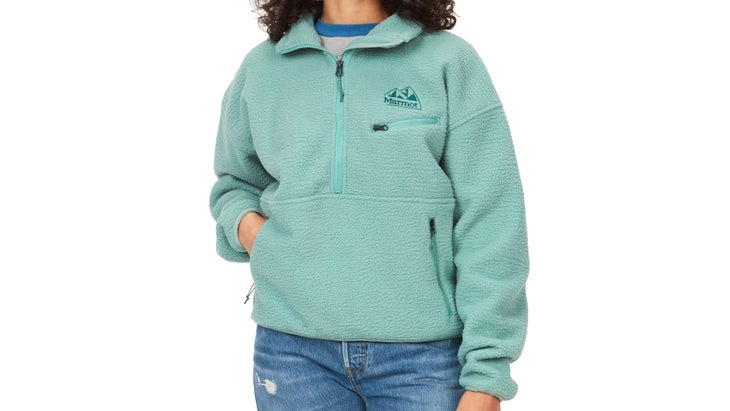
Sizing: XS-XL
Pros: Trendy, versatile, plenty of zippered pockets to keep essentials safe
Cons: Not breathable enough to wear as a mid-layer while skiing or snowboarding in freezing temperatures
We’ve tested countless fleeces over the years, and though the Marmot ‘94 E.C.O. Recycled sherpa isn’t particularly technical, it has the fun retro style and key features we’re looking for in a casual winter sweatshirt staple. Out of all the pieces we tried this season, our testers wore this fleece the most. The 100 percent recycled polyester fabric is the ideal weight—it’s not so heavy that we overheated when wearing it cozied up to the fireplace at a backcountry hut in Hamilton, Montana, but was just thick enough for a few hot laps the day before Bridger Bowl closed when the temps were in the high-thirties. The ‘94 E.C.O. endured late-season slush, keeping our baselayers dry thanks to its ample thickness. A zippered front pocket kept things like a ski pass and keys safe on the slopes, and a zippered kangaroo pouch kept our hands warm. One tester loved how high the wide, half-zip collar extended; she could bury her face deep inside when the temperatures dropped later in the evening. She wore the hot pink color—it comes in a rainbow of excellent hues—from the hill to the picnic tables at the Grizz more than once in the late spring, and received endless compliments.
Bottom Line: The ideal sweatshirt staple to live in all winter once the lifts stop spinning
Crap Eyewear The Heavy Tropix Sunglasses ($89 for Non-polarized and $109 for Polarized)
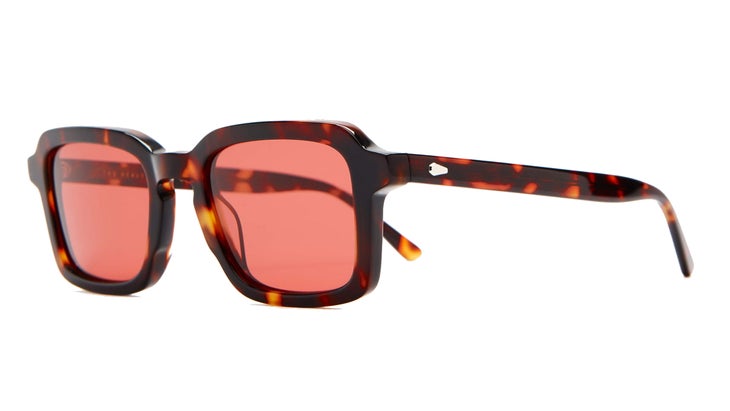
Sizing: One Size
Pros: Durable, timeless, polarized
Cons: Not grippy enough to wear while being active
Crap Eyewear, a Venice, California-based, Climate Neutral-certified brand, has exploded on the skate fashion scene in the past year or so, and we’re here to report that the hype is real. We tested the Heavy Tropix shades all winter and found that the weight, shape, lenses, and colors earned it a top spot in our sunglasses rotation. Like all Crap shades, the frames are made from bioacetate, which means they’re plant-based and biodegradable (although we should note that not all landfills support biodegradation, and the brand’s website doesn’t say how long the shades take to fully biodegrade). But there’s no compromise on durability—the lenses are C-39 (a type of plastic) which means they’re less likely to shatter than glass, yet offer superior optics to polycarbonate. Testers dropped them out of their pockets on a run, chucked them into the bottom of ski bags, and tossed them in the back of the car with no signs of wear and tear. The large (but not too large) frame and 100 percent UVA/UVB-protected polarized lenses kept our peepers safe against bright snow during a long après session after we threw in the towel early. There’s no sticky nose bridge, so they were tangle-free to put on top of our hair in the evening. Plus, they look good on everyone—the spin on an aviator shape is timeless enough that it won’t go out of style anytime soon. Testers felt right at home on the deck of Vista Hall at Big Sky Resort wearing these shades. The one downside? Our friends kept trying to steal them off of our faces.
Bottom Line: Durable, fashionable shades that can handle snow glare—and envious friends.
How to Buy
While we admittedly focus on new gear for our annual guide, all of our testers agree that if consumers can find après clothing secondhand (or better yet, already in their closet), that’s the best route to go. Because après clothing isn’t essential to keeping us alive outdoors, we advise readers to avoid unnecessary purchases. Besides, it’s way cooler to sport the same hat for the past decade than to buy a new one every season, and everyone loves a retro find.
But if consumers are new to the fine art of après and don’t have the apparel to fit their needs yet, look for timeless options that will last. Check out a guide like this one to determine if the brand you’re considering is up to your sustainability standards, and look out for specific, third-party certifications like B-corp and Fair Trade Certified. While it can be tempting to buy the latest trends, consider if you’ll still want to wear them five or ten years down the line.
Let’s not forget that après happens in high alpine environments. That means that while we want to look good, we need to be comfortable, too. You might love the look of those gas station shades you picked up on the way to the resort, but your eyeballs won’t be thanking you afterward. For backcountry huts, parking lots, and even outdoor patios at your favorite ski resort, clothing that is waterproof, somewhat wind-resistant, and warm is essential. Pieces with synthetic insulation stay warm when wet—important if you’ll be in regions like the Pacific Northwest. Down insulation tends to be warmer, but it isn’t as waterproof, so consider it for cold, dry regions like northern New Mexico.
How We Test
- Number of testers: 5
- Number of products tested: 31
- Number of days tested: 30
- Number of beers spilled: 8
Our testers this year were based in Bozeman, Montana, which provided an exceptional base camp to try out a varied field of new apparel. The Grizzly Ridge bar (also known as the Grizz) at Bridger Bowl produced the ideal scene for testing clothes that appeal to younger crowds; our waterproof jackets and pants faced not just rain and snow, but also spilled Coors Light (with lime) and cheap margaritas. The parking lot at Bridger Bowl was another popular testing ground—lounging on sled decks atop friends’ pick-up trucks granted an excellent platform to show off new apparel and determine which pieces received the most praise. Didn’t get enough compliments on a sweater? Out of the running. On the other side of the spectrum, Big Sky Resort about an hour south of Bozeman supplied a more upscale scene for testing clothing. If we felt just as comfortable wearing a piece at the resort’s craft cocktail haven, Caribiner, as we did at the Grizz, we knew we had a winner. This year, we also made sure to only select pieces that were exceptionally lasting and from brands that make an effort to produce their products through sustainable and fair trade practices.
As much as we cared about the après apparel’s aesthetics, we paid close attention to technical elements as well. Because most of our après sessions were outside in high alpine environments, we vetted waterproofing, windproofing, warmth, and durability in a wide range of conditions. If we felt a product looked amazing but didn’t keep us cozy enough in temperatures below fifty degrees, it came off the list. We also tested in Jackson Hole, Sun Valley, Truckee, Salt Lake City, the Austrian Alps, and various huts in the southwestern Montana backcountry, which provided an excellent field of varied climates.
Meet Our Lead Testers
Kelly Klein
Kelly is ���ܳٲ������’s associate gear editor based in Bozeman, Montana. She has worked for ���ϳԹ��� for four years and specializes in skiing and mountain biking. This year, her primary resort was Bridger Bowl, but she also skied and tested après gear at Big Sky, Sugar Bowl, Vail, Solitude, Snowbird, Sun Valley, Cooke City, Hamilton, and Rauris, Austria.
Abby Lawes
Another Bozemanite, Abby is a sustainability and ESG senior associate at the consulting firm PwC, so she especially knows what to look for in sustainable and ethically-produced companies. Abby’s favorite après haunts around Montana include the rooftop of the Crystal Bar, hot tubs she can mooch off her friends, and the bar at 7 Gables Resort in Anaconda.
Caroline Painter
Originally from Seattle, Washington, Caroline currently works as a fifth-grade teacher and is based out of Bozeman, Montana. She got her best après-ski testing this season after an avalanche course at Jackson Hole Mountain Resort, at the Grizz with Abby and Kelly, and lounging with friends on the deck of the Woody Creek hut near Cooke City, MT in late April.


